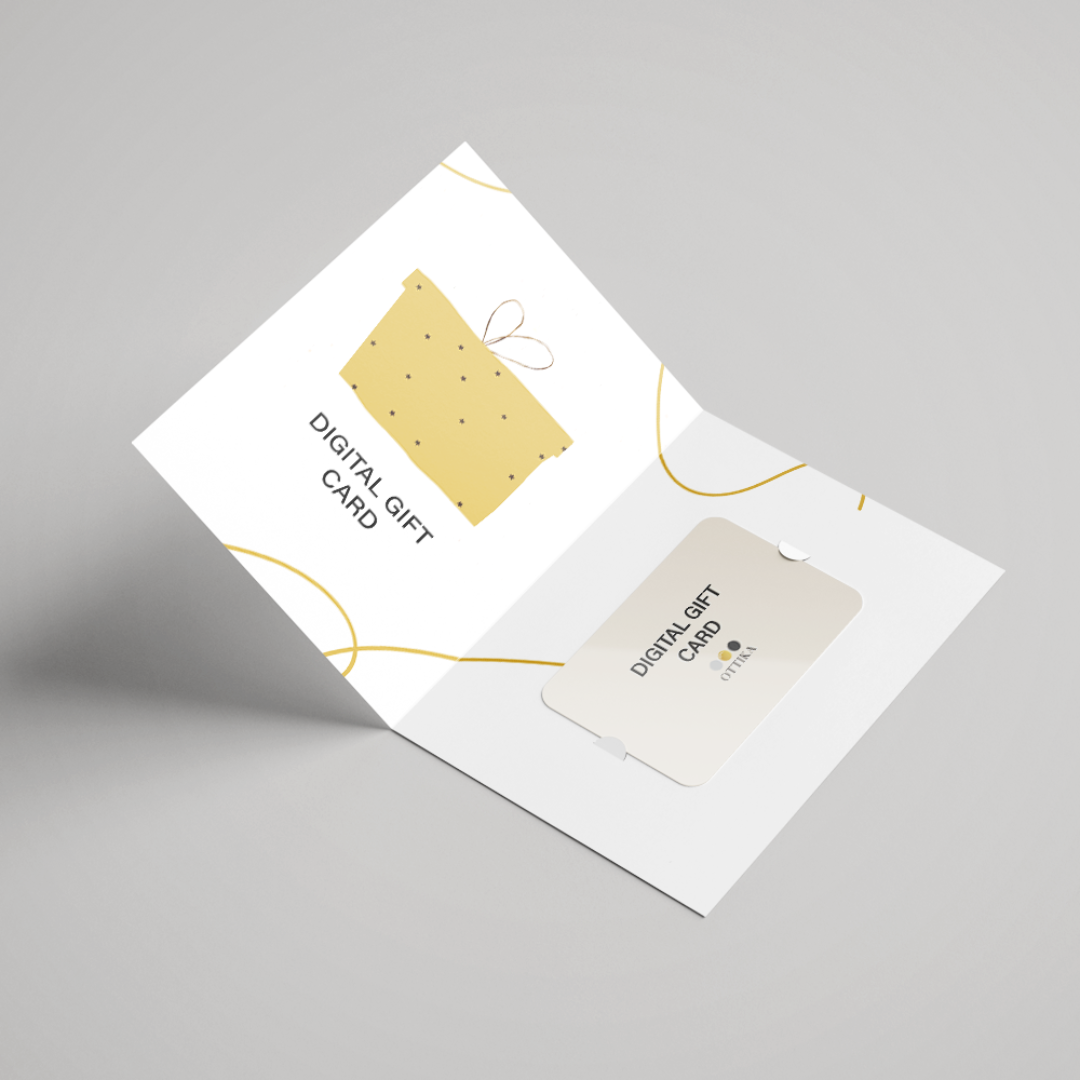Ottika Group e-Gift Card
- Prix normal
-
$8.41 USD - Prix normal
-
- Prix de vente
-
$8.41 USD
Description
See the world in style!
Gift the perfect view with our eyewear online gift card. Elevate their look and vision with a touch of elegance. Shop now and let them choose frames that frame their unique personality.

Ottika Group gift cards provide the perfect gift for any occasion.
With no expiration date or hidden fees, you can easily purchase and distribute the perfect gift for any special occasion.
Redeem at www.ottika.com
Gift Card Redemption:
- The eyewear online gift card is redeemable only on our official website.
- The card cannot be used for purchases at physical stores or any third-party retailers.
Expiration Date:
- The gift card has no expiration date, providing the recipient ample time to choose the perfect eyewear.
Balance and Reloads:
- Gift card balances can be checked on our website.
- The card is not reloadable; once the balance is used, the card becomes void.
Lost or Stolen Cards:
- We are not responsible for lost, stolen, or damaged gift cards. Please treat them like cash.
Non-Transferable:
- The gift card is non-transferable and cannot be exchanged for cash.
Returns and Refunds:
- Items purchased with the gift card are subject to our standard return policy.
- Refunds for purchases made with the gift card will be issued as a credit to the gift card. Fraudulent Activity:
- We reserve the right to refuse, cancel, or hold for review any gift card transactions for suspected fraud.
Use of Multiple Gift Cards:
- Customers can use multiple gift cards for a single purchase if needed.
Modifications to Terms:
- We reserve the right to modify these terms and conditions at any time.
Contact Information:
- For questions or assistance, please contact our customer support team.
By purchasing or using the eyewear online gift card, you agree to these terms and conditions.
Impossible de charger la disponibilité du ramassage



